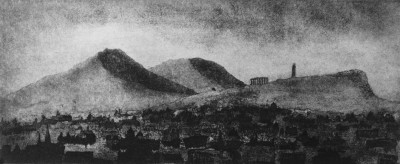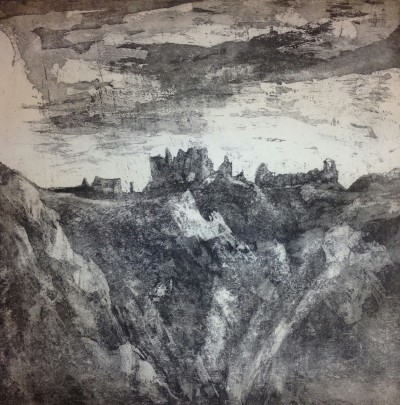Here’s a couple of new prints I’ve just finished. Dunnotter Castle in particular is quite different from what I’ve been doing for the past couple of years, but I have loved the painterly method and the scratchy effects you get from using sugarlift, which is how I did this plate. Picasso invented this style of etching where you paint or use a fine nibbed pen to draw a suger solution onto the metal, then once it’s dry you cover the whole plate with straw hat varnish before pouring hot water over it. The water and the heat makes the sugar solution expand and burst through the varnish in the areas you painted, exposing the bare plate. The varnish elswhere on the plate protects it from the acid. You then clean the plate and add an aquatint (a fine spray of acrylic or resin-based dots which acts like a protective mesh screen) to it and begin the process of exposing it to the acid for the various tints. The tiny dots of aquatint again protect the metal beneath them allowing the acid to only etch the spaces in between, thus creating tone. I usually bathe the plate in 30 second dips for each tone, but it depends on the metal and the acid being used. It can be a wonderfully expressive technique and I’ve used it a few times now.
Edinburgh from Inverleith Park below is another sugarlift etching. I’m looking forward to experimenting with it some more in the coming months.


[ssboost url=http://www.cliveramage.com/blog]